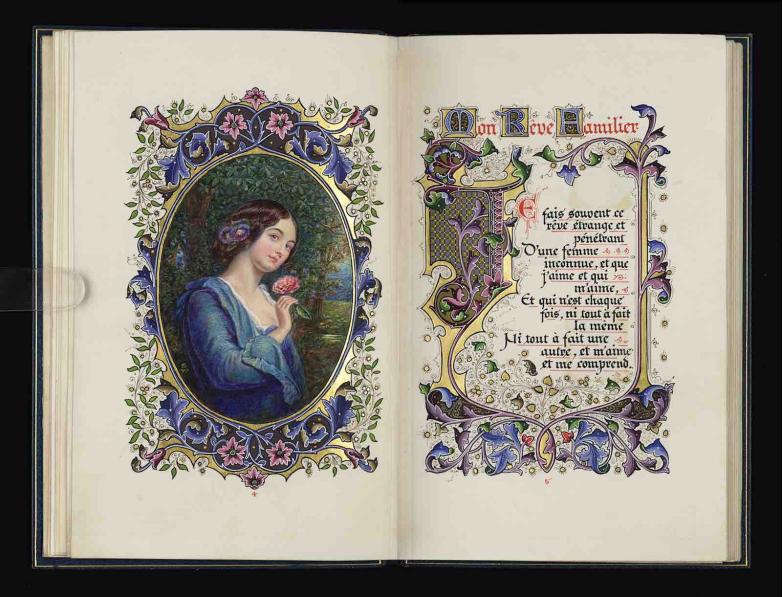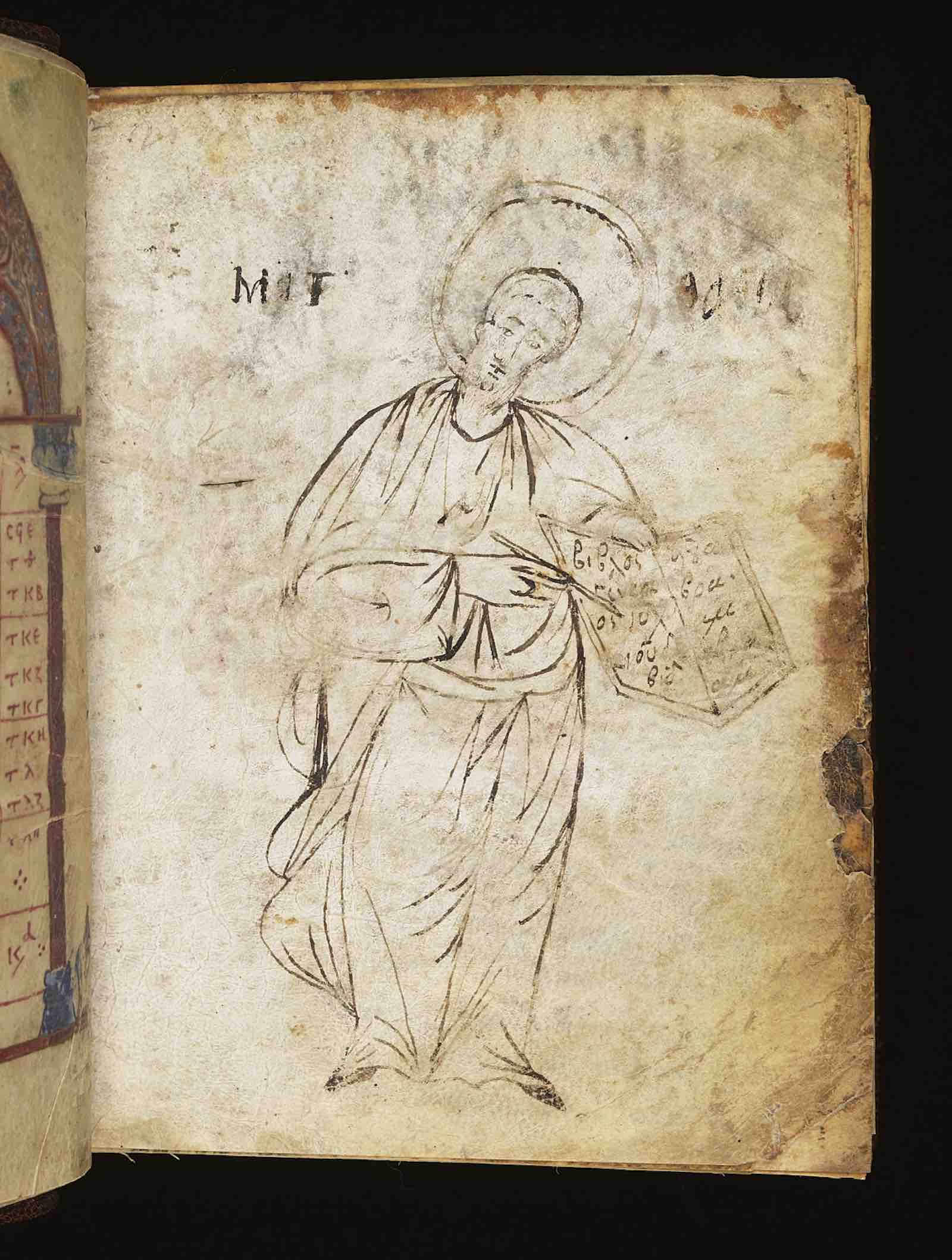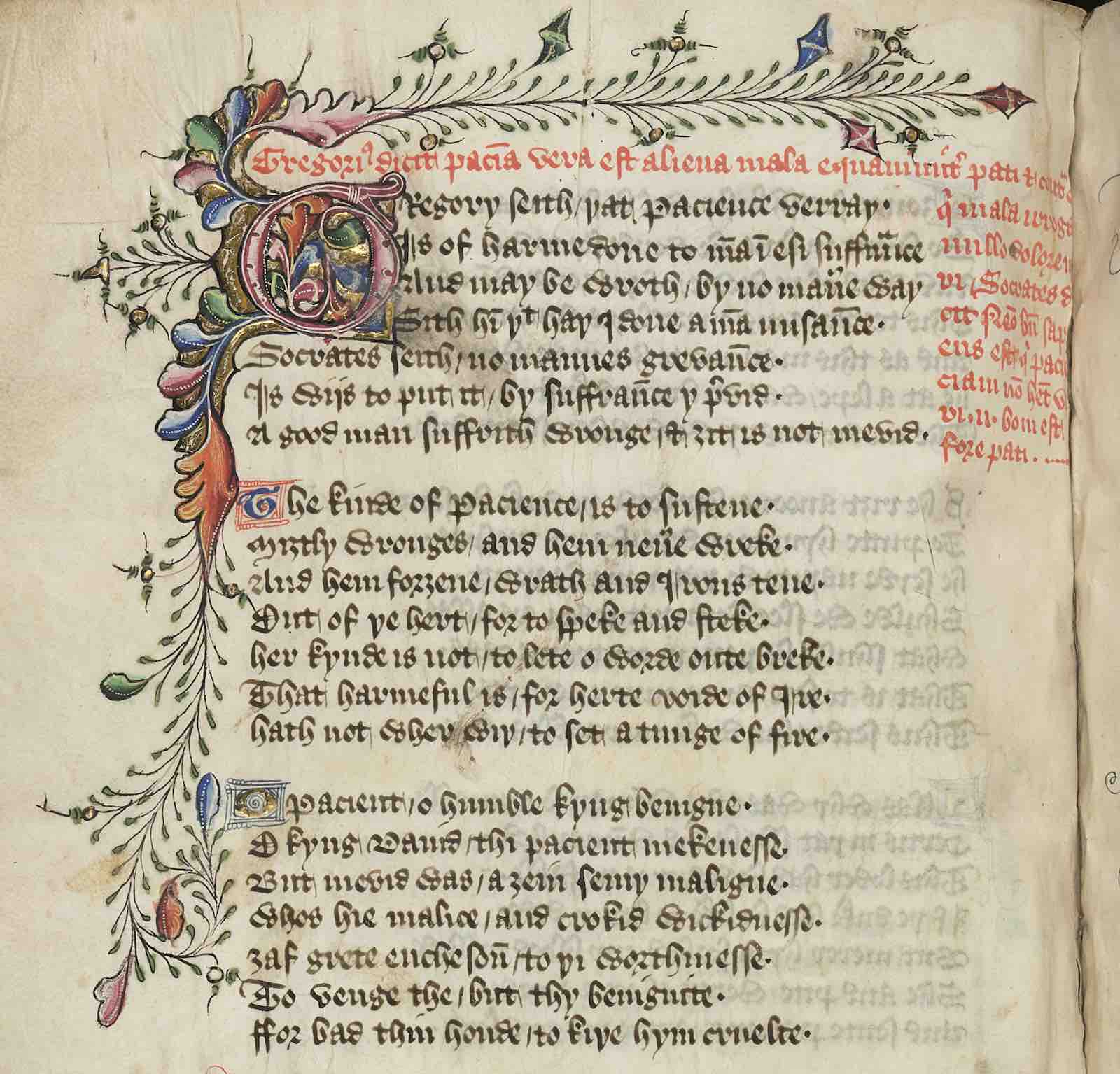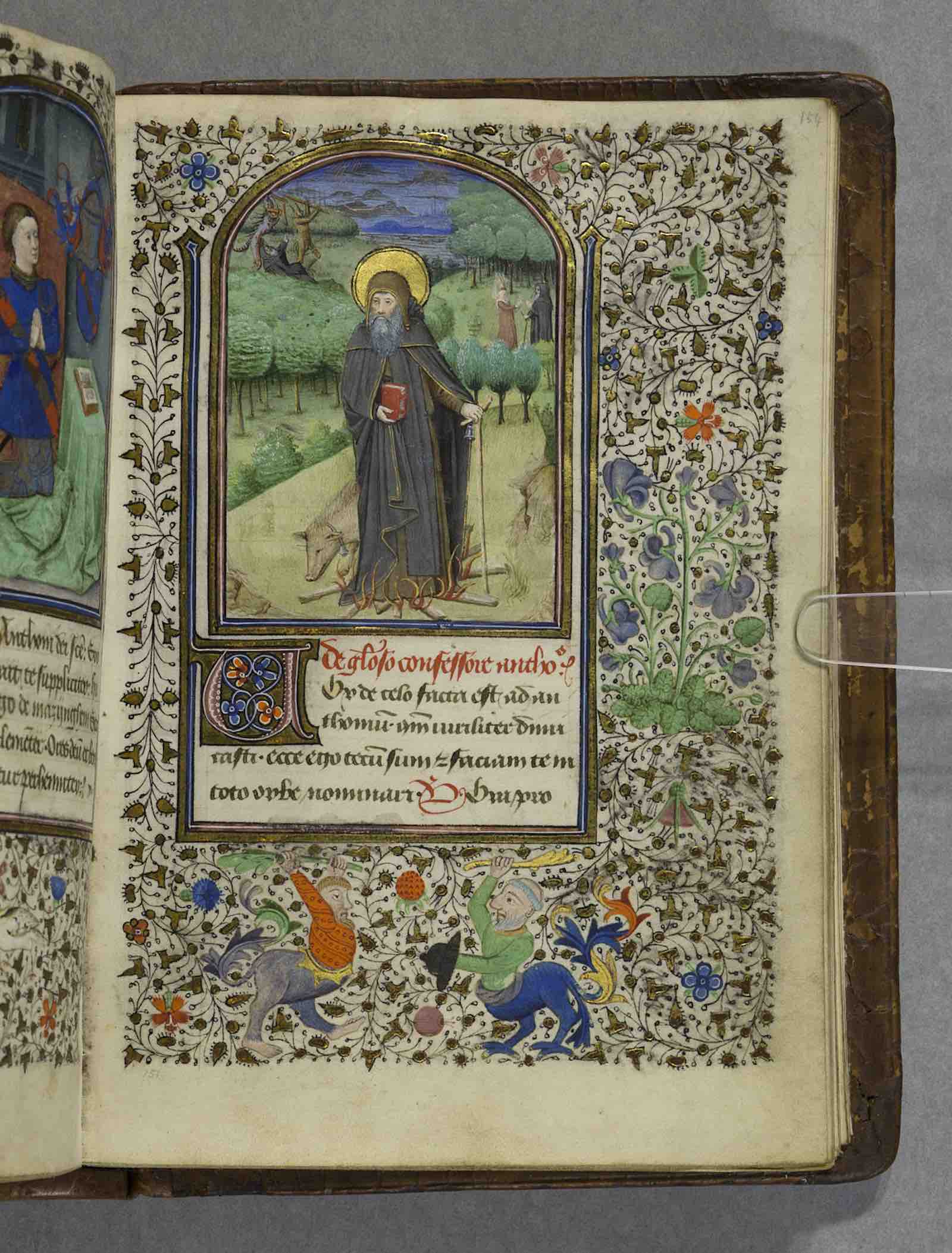Like his contemporary and fellow collector Edward Allen Brotherton, whose bequest established the Library and Collection bearing his name at the University of Leeds, Watson rose from humble beginnings to run a successful chemical manufacturing empire. Both men bought books at auction and were regular customers of the London-based antiquarian book dealer Bernard Quaritch, raising the intriguing possibility that they may have competed with one another for a highly prized volume or two. Brotherton acquired his own Shakespeare First Folio in 1924, and it was included in the collection which came to the Library following his death in 1930.
The oldest item in the new consignment from Watson’s library, a Greek gospel book from Byzantium, c. 950-1050, is now also the oldest manuscript in the University’s collections. It bears evidence of centuries of heavy use, with annotations, text worn away and rewritten, several lost leaves replaced, and a drawing of St Matthew added by a 15th century reader.
Fewer than 50 copies of Thomas Hoccleve's The Regiment of Princes are known to exist, but historic damage to Watson's copy of this beautiful manuscript shows that it was not always as highly prized as it is today. Illuminated letters and sometimes whole pages have been roughly hacked from the volume, possibly during the craze for découpage that began in the 17th century.
Another medieval rarity, Watson’s Brut Chronicle is one of 13 surviving examples of this version of the popular history of England. Combining real and imaginary events, it recounts the legends of King Lear and King Arthur as if they were true. This edition joins a unique alternative version in the University’s collection, also displayed, which provides first-hand evidence of the Peasants’ Revolt of 1381 among other genuine historical events. From the Brotherton Collection, a lavishly illuminated Book of Hours also complements this selection from the Middle Ages.
Within an exquisite Renaissance travel compilation, Gaius Julius Solinus’ third-century Polyhistor includes descriptions of exotic beasts and the strange breeds of humans thought to exist in remote areas. Of Britain, Solinus observes: "The uncouth customs of this island’s inhabitants make it a savage land… the people unwelcoming and warlike."
Jumping to the early 20th century, a 1917 manuscript by the calligrapher and illuminator Alberto Sangorski was probably purchased new by Watson. Its Gothic-inspired hand and binding resonate with the medieval objects in the display, but it contains poems by the French Symbolist Paul Verlaine. Famously the lover of fellow ‘accursed poet’ Arthur Rimbaud, Verlaine had died in a mire of alcohol and drug addiction in the last decade of the 19th century. Appreciation for the work of his circle grew in subsequent years, and Watson’s ownership of this meticulously-crafted production hints at a finger on the pulse – and perhaps a more liberal sensibility than might be expected from a turn-of-the-century captain of industry.
The noted archaeologist and bibliophile Denys Spittle acquired a number of volumes from Watson’s collection, and the seven items consigned to the University of Leeds were allocated from Spittle’s estate through the AiL scheme, settling £298,894 of tax.
Masud Khokhar, University Librarian and Keeper of the Brotherton Collection at the University of Leeds, commented: “We were delighted to be allocated these rare and fascinating books through the AiL scheme. The new display in The Treasures of the Brotherton Gallery sets them in the sympathetic context of the collection that they join here at the University of Leeds. The opportunity to see them in person really brings alive the resonances between Watson and Brotherton, and the associated histories of 19th century industry and collecting. It’s also an opportunity to experience first-hand the presence and physicality of these beautiful objects, and the stories of their use over the centuries.
“Of course, each of the books also has its own distinct significance for academic research and study. The Watson consignment has already been presented to specialists at the International Medieval Congress held at the University over the summer, and our academics are incorporating them into their teaching and research."



















